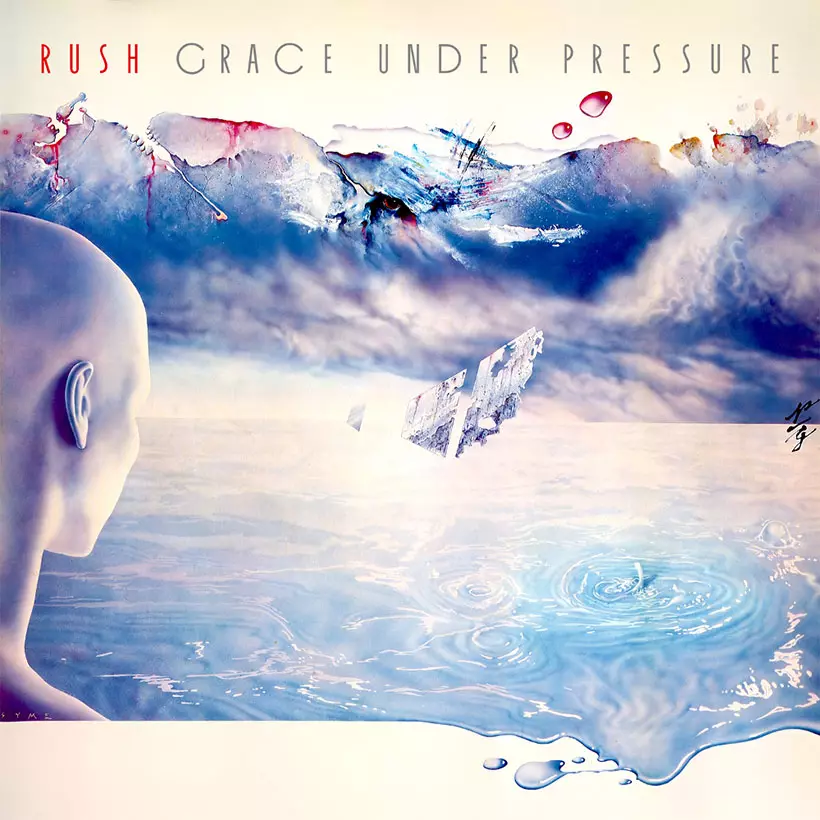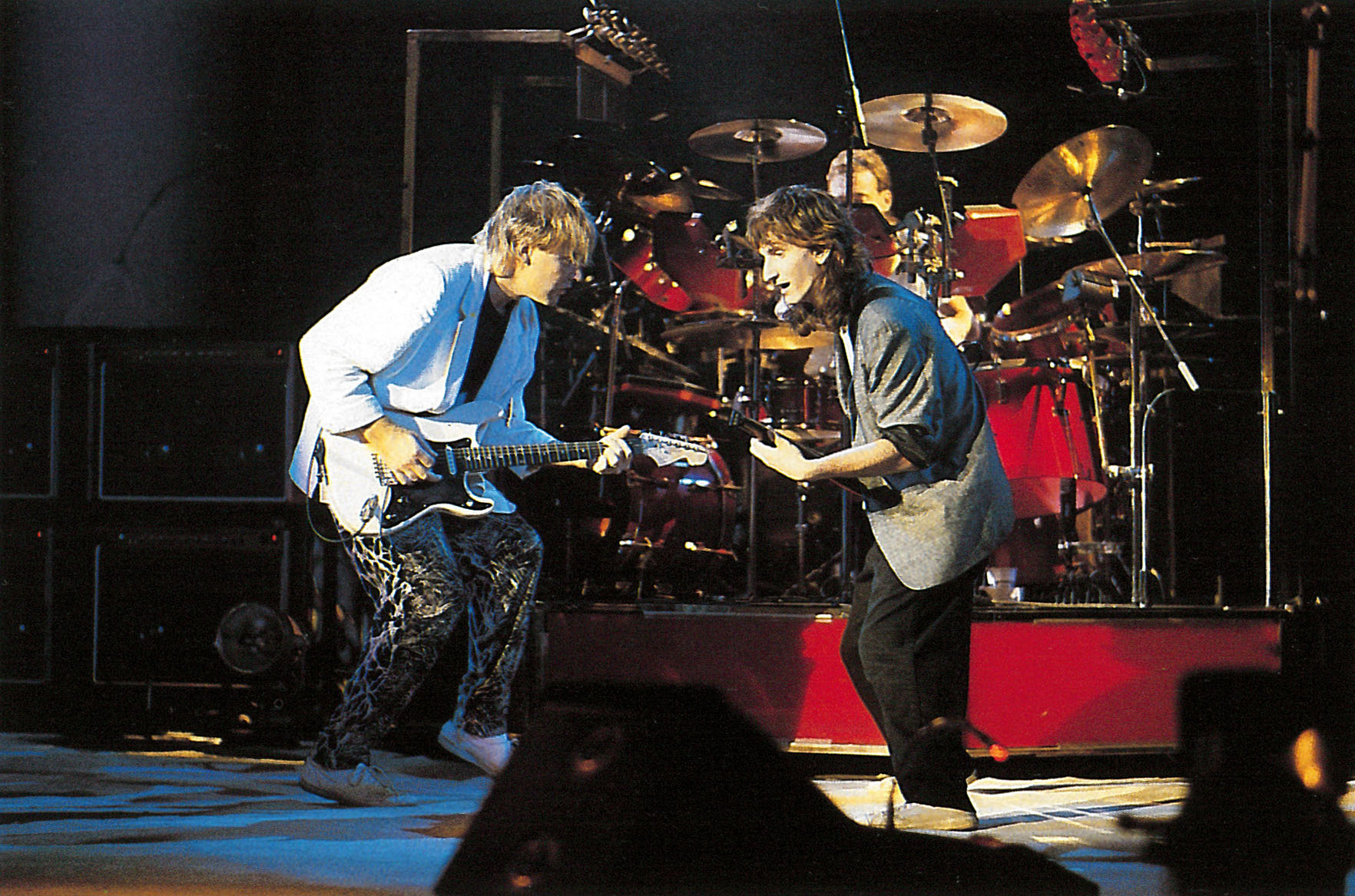
The opening track, “Distant Early Warning” introduces with a cold, piercing guitar chord, accompanied with slow bass line. Together they methodically keep the tension, and the track builds and builds until the first note of the keyboards kicks the track into gear, with Geddy’s vocal delivery guiding the track at a steady pace. This track shows the importance of the synthesizers, as they have now become a more prominent element to the structure of the songs. In addition to more synthesizers, Neil Peart started to utilize electronic drums to his arsenal on this record. With all these ingredients, “GuP” becomes the logical continuation of the direction the band that was implemented with “Signals”, with the band showing great confidence in this new identity that they on this release. The keyboards help give the record this cold atmosphere, with each strum of the guitar strings or piercing synthesizer making the listener feel as if they are trapped in a never-ending blizzard. This atmosphere is heightened by the lyrical content, which is the darkest the band had gotten up to this point.

Tracks such as “Afterimage” and “The Enemy Within” are two of the best examples of this dark lyrical content that is present throughout this record. The second song “Afterimage” is a painfully personal track. While having an upbeat atmosphere to it, this was written by Peart who recently lost a friend and there is the melancholic feel of nostalgia and loss that makes the outward appearance of the track more heart breaking. “The Enemy Within” (the third, or first part of the “Fear” series, considering how the series is ordered), is another fast pace, somewhat upbeat track, but it touches on la fairly accurate portrayal of how a person feels when they are under intense anxiety and paranoia. The "Body Electric" is another great example, with its slow guitar riff, effectively placed synthesizer sections, and rhythmic drumming, it conjures a story about a robot who gains free will and has to run for its life away from its creators. It's frantic, anxiety inducing, tense, while also making sure to be catchy and memorable.
There are a few drawbacks to “Grace Under Pressure”, mainly in the second half. While it opens strongly with “The Body Electric” and concludes just as strongly with “Between the Wheels:, the two middle tracks leave a lot to be desired. “Red Lenses” is a fairly interesting track, a track that exhibits the band exploring realms of funk, and while it is a cool idea, it feels like a rejected Michael Jackson cut, not really like a Rush song. As for “Kid Gloves”, that is not a song that works extremely well, as the execution comes off as way too upbeat given the subject matter. The song appears to be about bullying in school, and the tone just doesn’t really match what the song is presenting. So while the first half of the record has a consistently strong array of tracks, the second half really fumbles by comparison, leaving for a very uneven listening.

There is one element of the album, or more specifically one track, that has not been mentioned yet: “Red Sector A”. It is easily up to this point the darkest subject matter the band has tackled. This song is about the suffering that is committed while being in prison camps, and while the song makes it ambiguous as to what real life events it is alluding to, the song was based on Geddy Lee’s mother’s experiences. Lee’s mother and father were both survivors of the Holocaust, and in his early life Geddy has recounted the burden of being the child of Holocaust survivors, a feeling that many children born from Holocaust survivors have had to similarly deal with. This track, despite the clean production, it is raw in its sincerity. It’s cold, portraying a world is uncaring to their plight, and you can just feel the description of hands being cut by razor wire as Geddy sings the lyrics. It is nothing short of powerful, stirring, and downright horrifying, though it never comes off as shock value, it doesn’t come off as insincere, it is real, it is heartbreaking and it is powerful of the depictions of the reality that people in those conditions had to suffer through. If any track off this album is a perfect representation of what this record is trying to convey, it would be "Red Sector A".
“Grace Under Pressure” would become another success for the band, and it would be the record that emboldened the power trio to continue moving forward in this sonic direction. The next album would showcase the band enthusiastically embracing the new technology, and in the process create a mid eighties synth-rock classic.
Comments
Post a Comment